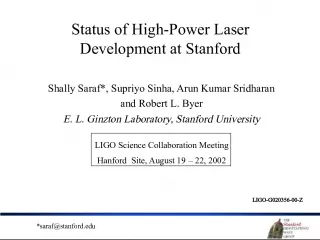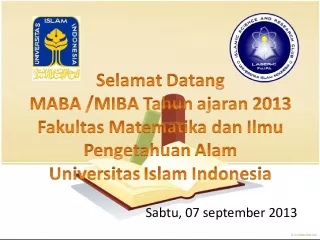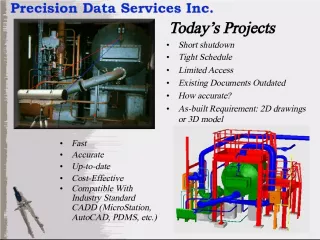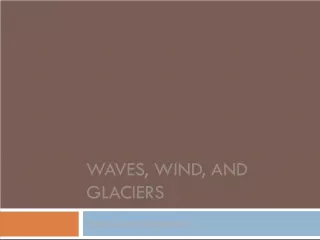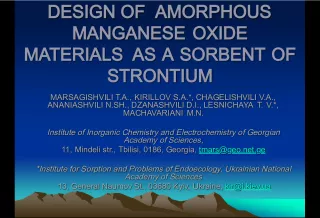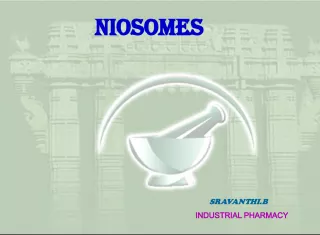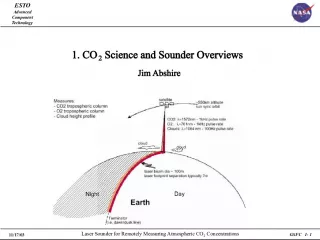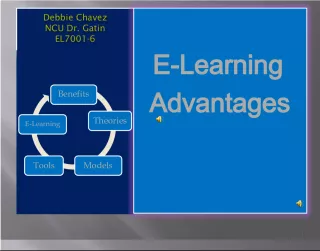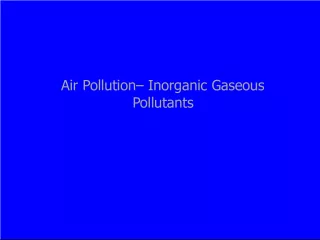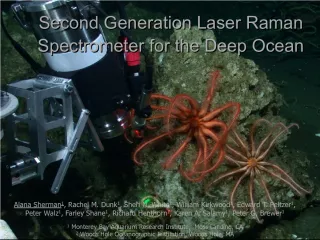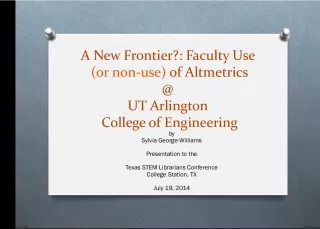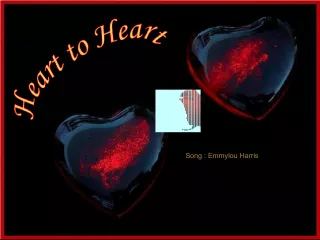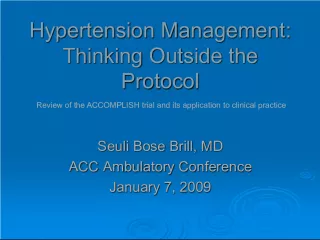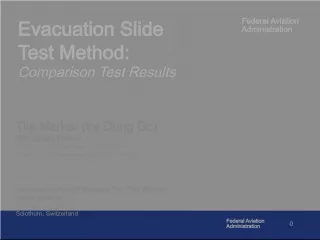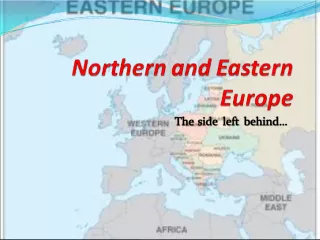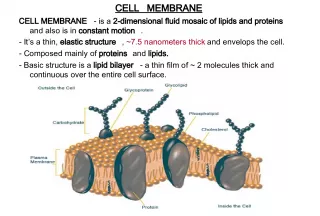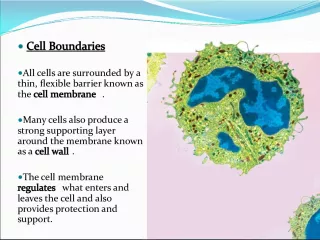Pulsed Laser Deposition of Oxide Epitaxial Thin Films: Recent Results and Advantages
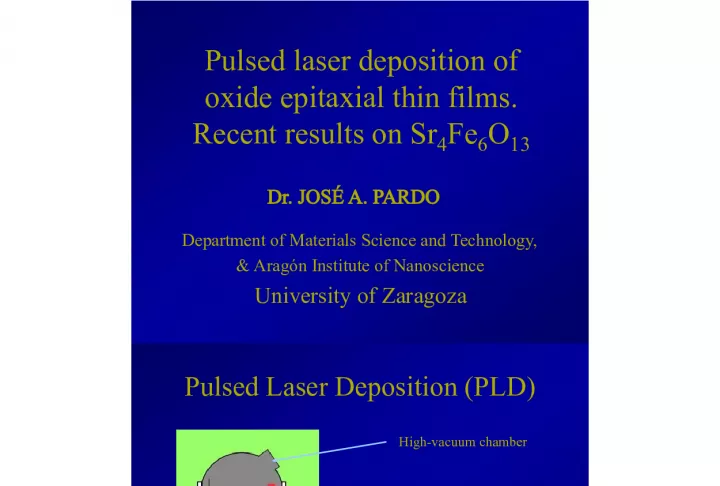

In this article, Dr. Jose A. Pardo discusses the recent results of his research on pulsed laser deposition (PLD) of oxide epitaxial thin films, with a focus on Sr4Fe6O13. He also explains the advantages and disadvantages of PLD, including stoichiometric transfer of material and the issue of splashing and inhomogeneous thickness.
- Uploaded on | 0 Views
-
 izaiahmarks
izaiahmarks
About Pulsed Laser Deposition of Oxide Epitaxial Thin Films: Recent Results and Advantages
PowerPoint presentation about 'Pulsed Laser Deposition of Oxide Epitaxial Thin Films: Recent Results and Advantages'. This presentation describes the topic on In this article, Dr. Jose A. Pardo discusses the recent results of his research on pulsed laser deposition (PLD) of oxide epitaxial thin films, with a focus on Sr4Fe6O13. He also explains the advantages and disadvantages of PLD, including stoichiometric transfer of material and the issue of splashing and inhomogeneous thickness.. The key topics included in this slideshow are Pulsed Laser Deposition, High Vacuum Chamber, Oxide Epitaxial Thin Films, Stoichiometric Transfer, Splashing,. Download this presentation absolutely free.
Presentation Transcript
1. Dr. JOS A. PARDO Department of Materials Science and Technology, & Aragn Institute of Nanoscience University of Zaragoza Pulsed laser deposition of oxide epitaxial thin films. Recent results on Sr 4 Fe 6 O 13
2. Pulsed Laser Deposition (PLD) High-vacuum chamber Substrate on substate heater Rotating target (sintered ceramic) O 2 pressure control
3. Pulsed Laser Deposition (PLD) Advantages: Stoichiometric transfer of material (Complex oxides: YBa 2 Cu 3 O 7- ) Direct relation number of pulses- thickness ( 0.1-0.3 /pulse) Few experimental parameters (T, PO 2 ) PLA + D Disadvantages: Splashing (solid particulates and liquid droplets) Angular distribution of ablated material cos n , n 10 (small area or inhomogeneous thickness)
4. Pulsed laser-matter interaction Roughly: I 10 4 - 10 5 W/cm 2 : heating I 10 5 10 7 W/cm 2 : melting I 10 7 10 10 W/cm 2 : vaporization and plasma formation Wavelength Pulse duration Energy per pulse E Focused on area S Fluence = E/S Peak power P p = E/ Intensity I = P p /S S Optical absorptivity Thermal diffusivity Other properties...
5. PL-matter interaction Congruent ablation Single target > threshold No target degradation PLA-PLD: 10 ns 10 J/cm 2 I 1 GW/cm 2 UV excimer Q-switched Nd:YAG D. BUERLE: Laser Processing and Chemistry. Springer (2000)
6. Thin film nucleation and growth Deposited atom (adatom) Hot atom Diffusion to cluster Dimer 2D-island Atom reevaporation Dissociation from cluster 3D-island Cluster
7. Models for epitaxial growth Free-energy: s : substrate free surface f : film free surface i : substrate-film interface f s i
8. Models for epitaxial growth Frank-Van der Merwe (2-D layer-by-layer) s > f + i Volmer-Weber (3-D islands) s < f + i Stranski-Krastanov
9. Features of (epitaxial) thin films Single crytals: - Anisotropy - Very low density of high-angle grain boundaries High surface-to-volume ratio (surface effects) Some particualr growth-induced defects (stacking faults, misfit dislocations, buffer layers...) Epitaxial strain Influence of substrate (diffusion, chemical reactions at substrate/film interface...) Miniaturization (nanotechnology, sensors...) Alternated thin films: Multilayers and heterostructures (planar technology devices, magnetic tunnel junctions) MATERIALS WITH NEW PROPERTIES!
10. Epitaxial strain Deformation of film lattice to match the substrate lattice Strain: 1% Hookes law: = E = F / A o : stress, = l / l o : strain, Young modulus Oxides: E 10 11 Pa Epitaxial stress: 1 GPa Substrate choice: Compressive (a f >a s ) or tensile (a f
11. La 1.9 Sr 0.1 CuO 4 superconductors PLD T c values: Bulk LSCO: 25 K LSCO/SrTiO 3 ( c ): 10 K LSCO/SrLaAlO 4 ( t ): 49.1 K !!!
12. Multilayers of ionic conductors MBE Space charge region 2L D
13. PLD of Sr 4 Fe 6 O 13 epitaxial films PEOPLE INVOLVED: Barcelona - ICMAB: J. A. Pardo, J. Santiso, C. Sols, G. Garcia, M. Burriel, A. Figueras (PLD, CVD, XRD, XRR, SEM, Impedance) Antwerp - EMAT: G. Van Tendeloo & M. D. Rossell (TEM, HREM and ED) Sacavm - ITN : J. C. Waerenborgh (Mssbauer) Barcelona - ICMAB: X. Torrellas (Synchrotron) Lisbon - FCUL: M. Godinho (Magnetism)
14. Sr 4 Fe 6 O 13 Parent member of the mixed conducting family Sr 4 Fe 6-x Co x O 13 Perovskite-type layer Sr-Fe-O Fe-O double layer a b c Intergrowth structure Orthorhombic I ba 2 a = 11.103 b = 18.924 c = 5.572 ( A.. YOSHIASA et al ., Mater. Res. Bull. 21 (1986) 175 ) x = 2: very high oxygen conductivity = el + i
15. Sr 4 Fe 6 O 13 /SrTiO 3 (100) films b -oriented. Cube-on-cube epitaxy J. A. PARDO et al ., Journal of Crystal Growth 262 (2004) 334
16. Lattice parameters vs . thickness t < 30 nm fully strained films t > 170 n m relaxed films Sr 4 Fe 6 O 13 /SrTiO 3 Thickness range: t 15 300 nm
17. Epitaxial strain vs . thickness ~ t -1 for misfit dislocation-mediated plastic deformation Sr 4 Fe 6 O 13 /SrTiO 3 (100) J. SANTISO et al ., Applied Physics Letters 86 (2005) 132105
18. Oxygen content vs . thickness Sr 4 Fe 6 O 13 /SrTiO 3 films deposited under the same O 2 pressure Oxygen superstructure with modulation vector q = a m * 13- = 12+2 Strain relaxation through change in oxygen superstructure M. D. ROSSELL et al ., Chem. Mater. 16 (2004) 2478
19. Conductivity measurements NdGaO 3 substrates Pt electrodes and wires
20. Impedance spectroscopy Furnace up to 800 C Controlled atmosphere: O 2 , Ar Impedance analyzer HP-4192A (5 Hz - 13 MHz)
21. Sr 4 Fe 6 O 13 /NdGaO 3 (100) films Plane matrix of Sr 4 Fe 6 O 13 Needle-like precipitates of SrFeO 3-z b -oriented films. Cube-on-cube epitaxy
22. Conductivity of SFO/NGO in O 2 Strong dependence conductivity-thickness J. A. PARDO et al. Solid State Ionics (submitted)
23. Effect of stress on conductivity Small polaron hopping: (T) = (A/T) exp(-E a /kT ) Conductivity increases under compressive epitaxial stress SrTiO 3 NdGaO 3
24. Summary PLD is a versatile technique for the deposition of high-quality epitaxial thin films of oxides. The conductivity of epitaxial thin films of Sr 4 Fe 6 O 13 /NdGaO 3 (100) strongly depends on the film thickness. This dependence is most probably due to the effect of compressive epitaxial stress.
